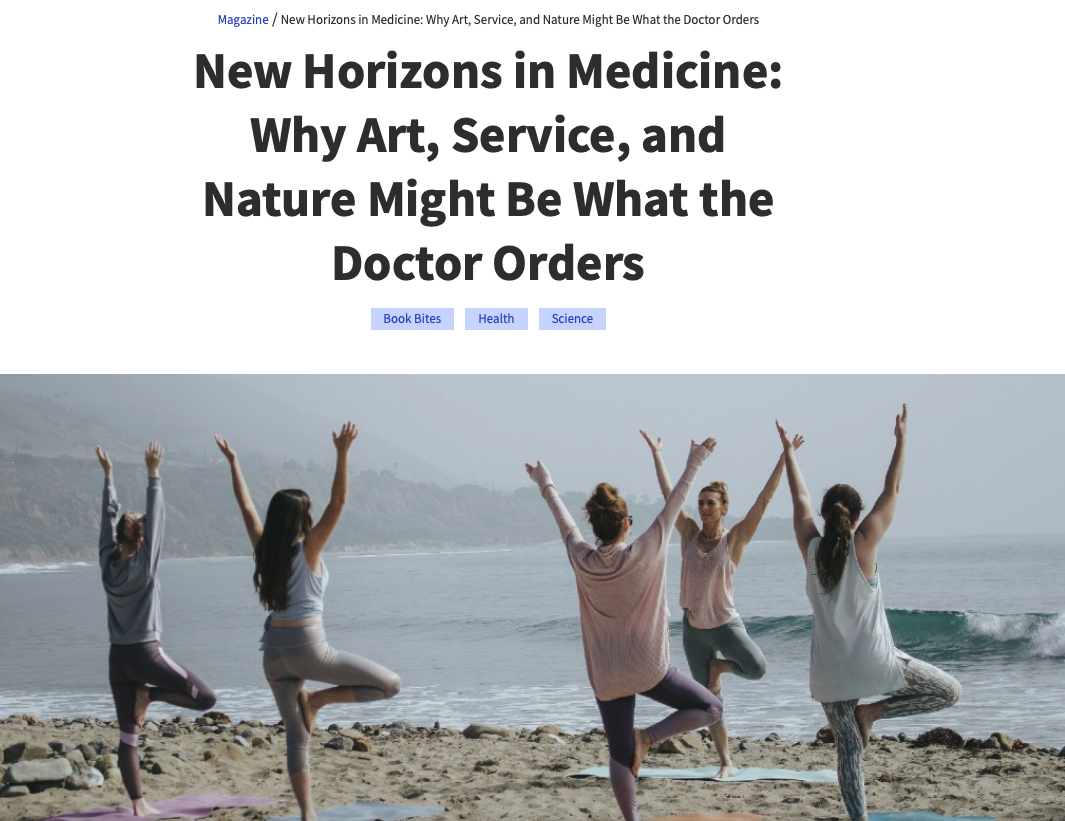[News] New Horizons in Medicine: Why Art, Science, and Nature Might Be What the Doctor Orders

Julia Hotz is a solutions focused journalist based in New York. Her stories have appeared in The New York Times, WIRED, Scientific American, The Boston Globe, Time, and more. She helps other journalists report on the big new ideas changing the world at the Solutions Journalism Network.
Below, Julia shares five key insights from her new book, The Connection Cure: The Prescriptive Power of Movement, Nature, Art, Service, and Belonging. Listen to the audio version—read by Julia herself—in the Next Big Idea App.
1. Social prescribing helps us rethink sickness—less as fixed disorders in the body and more as “reactions” to a stressful environment.
Social prescribing is a big new idea. But it’s rooted in a big old idea: the idea that our environment influences our health, for worse and for better.
Ancient philosophers, Indigenous thinkers, holistic medical experts, and positive psychologists have been independently preaching this idea for thousands of years. Large-scale population studies tell us it’s true: up to 80 percent of our health is socially determined by factors like where we live, with whom we live, and how we live. To be healthy, we need basic resources—food, cash, a safe home, a stable job. But we also need sources of joy, meaning, and relationships: Is there someone we can call at 3 a.m. in a crisis? Do we have a reason to wake up in the morning? Do we have outlets to cope with the sadness, anger, and fear that come with being human?
The data tells us having sources of well-being, a sense of purpose, and meaningful relationships can significantly influence our health and longevity. But the opposite is also true: if our environments don’t meet these psychological needs, we’re more likely to get sick. And since we’re experiencing overlapping epidemics of depression, anxiety, ADHD, addiction, and lifestyle illnesses, there’s reason to believe they’re related and that our environments are part of the problem.
The earliest version of our Diagnostic and Statistical Manual of Mental Disorders (DSM) acknowledged this relationship; more than depression, anxiety, or attention-deficit disorders, you had depressive, anxious, and hyperkinetic “reactions.” Your sickness was seen less as a fixed set of symptoms ruled by biological factors in a body, and more as a response to all kinds of biopsychosocial stressors in an environment.
But just as some environments can make us feel sick, other environments help us feel better, which leads us to insight number two.
-
Date
Feb 24, 2025
-
By
Next Big Idea Club
Newsletter
Sign up for the Healthy Aging CORE Alberta e-news to keep up-to-date with activity from the platform and the Community-Based Seniors Services (CBSS) sector across the province.
